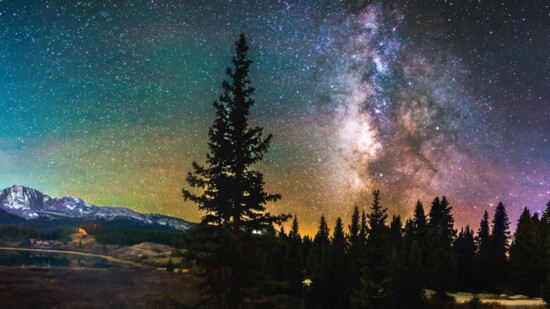Gem-toned leaves dripping off trees and sweeping mountain vistas—drives up US-550 easily fill a camera-roll with calendar-worthy shots of Southwest Colorado. But most tourists and locals neglect the best time to view this region’s splendors: nighttime! A near-perfect combination of high altitude, dry climate, and minimal light pollution combine to create world class stargazing conditions.
The best time to peek into the universe is near a new moon, or when the moon will be staying below the horizon until later in the night.
After sunset, escape to more remote spots to glimpse the shimmering star palaces. Just 35 miles west of Durango, Mesa Verde National Park was recently (in 2021) certified as a Dark Skies International Park. Marvel at the Milky Way’s glow or cascading meteor showers from the Morefield Campground.
Heading east from Durango, Chimney Rock National Monument opens the celestial window to ancient Puebloan culture and serves as a prime location for stargazing events. The monument's Great House Pueblo was strategically aligned with celestial events, demonstrating the historical significance of astronomy in the region.
Each time you gaze up at night’s dark ocean and notice how its sparkling ships sail steady courses throughout the year, you share in a human experience that spans countless generations.
A near-perfect combination of high altitude, dry climate, and minimal light pollution combine to create world class stargazing conditions.
